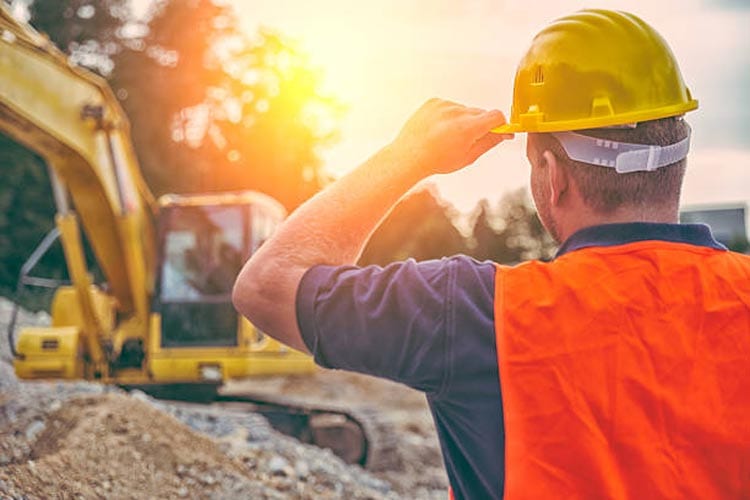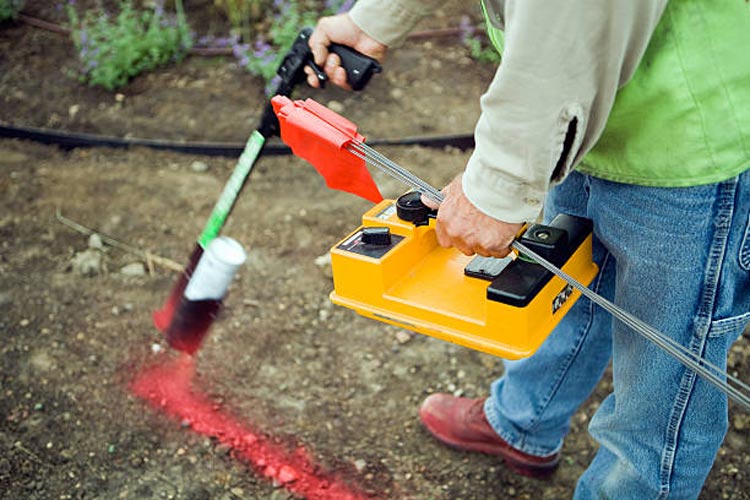Due to the existence of a particularly significant number of dangers, excavation is one of the most dangerous construction processes. To reduce the risk of excavation to construction workers, private utility locating services must follow a number of safety procedures.
It’s absolutely critical to take every precaution possible to ensure everyone’s safety and the project’s success.
Comprehensive utility locating, utility infrastructure investigations, damage prevention, and mitigation actions for issues detected during preliminary surveillance are all part of effective planning.
What is Excavation Work?
Excavation labor entails the removal of earth or rock from a location using tools, machines, or explosives to create an open face, hole, or cavity.
On any construction site, it is the initial action. It begins with the excavation of the structure’s foundation pit, which can be shallow or deep. It’s finished by filling the same pit with excavated earth or soil brought in from the outside.
The size and depth of the foundation, the types of soil strata, the water table, and the adjacent structures, among other factors, all influence construction excavation.
A person who engages in demolition, excavation, tunneling, or construction that causes damage to a pipeline facility that may threaten life or inflict significant bodily harm or property damage, according to the Federal Pipeline Inspection, Protection, and Safety Act.
Excavation work can take place in a variety of locations, including:
- Business premises
- Construction sites
- Public areas.
Excavation work includes the following tasks:
- Open excavations
- Potholing
- Pit excavations
- Retaining walls and trenches
- Shafts and drives
The Hazards of Excavation and Managing Risks
It’s not difficult to understand why. Trenching and excavation operations offer particularly high risks to workers.
According to data from the Bureau of Labor Statistics (BLS), 130 people died in trenching and excavation operations between 2011 and 2016. The private construction business was responsible for 80% of the fatalities, with 49% occurring between 2015 and 2016.
Striking services that are overhead or underground can kill or gravely hurt workers and those nearby. It is crucial to avoid undermining services as much as possible. All overhead and underground services should be identified and anticipated by good planning and supervision, which will assist in determining what activities will be permitted near the excavation activity.
To help you manage the risks, it is crucial to work with trusted private utility locating services. The planning phase of an excavation operation, which includes hazard detection and soil research, is where safe work practices begin.
An experienced private utility locating services should look for indicators of subsurface utilities such as fire hydrants, telephones, and transformers before proceeding.
Create a Utility Map
While you should always call 811 before digging, it’s also a good idea to create a utility map before beginning any utility service project. After all, 811 may be unaware of some private utility cables or unknown subterranean utility lines, or its information may be outdated.
You can use old utility maps as a reference while creating a utility map, but you should never use them to guide your excavation. Utility maps must be updated on a regular basis, and preparing one before the start of a new project is the best approach to avoid mishaps.
Falling Objects
Due to the usage of heavy machinery, falling items are a significant cause of excavation injuries.
Excavated material, referred to as a spoil pile, should be kept at least two feet away from the excavation’s edge.
Although it may be essential to move spoils to another area, this procedure often necessitates the installation of holding measures. While loading and unloading products, workers must also keep a safe distance from automobiles and other equipment.
Water accumulation prevention is an important safety measure in construction in general, but it’s especially vital around excavations.
Gases
Trenches can have hazardous atmospheres due to a lack of oxygen or a high concentration of another gas. Some trenches may have an environment that necessitates the use of additional protective gear such as masks or respirators.
Before the private utility locating staff begins an excavation, the atmosphere must be examined under the supervision of a qualified person, and at regular intervals thereafter.
The qualified person in charge of an excavation project must also take adequate measures to mitigate the risk posed by the excavation’s atmosphere, which may include removing personnel from the site until conditions improve.
Cave-Ins
Collapsed tunnels or cave-ins are one of the most prevalent accidents that private utility locators face when undertaking excavation work or dealing with subterranean lines.
Private utility locating contractors must examine the soil composition and design and install structures that will serve as support and shielding to avoid this. They can assess the likelihood of a cave-in by testing the soil ahead of time, while support beams can prevent tunnel collapse and shields can protect employees in the event of a cave-in.
Assessment
Excavations should only be left open for as long as is necessary to complete the job. After the site has been completed, it should be reviewed, primarily for the purpose of improving safety procedures.
The assessment’s findings might then be incorporated into future operations planning, resulting in a trend of continuous improvement.
Proper Equipment
Excavation projects are no laughing matter. Most projects cannot be completed without the essential tools, even with the most experienced utility personnel.
Investing in pricey equipment for a one-time activity can be unwise if you’re a homeowner digging for a one-time project.
Rather, it is safer and more cost-effective to hire an expert utility finder who already has such equipment and is familiar with using it to provide services. These excavators have been trained to use equipment like ground-penetrating radar to verify that all survey markers are accurately documented.
Hire Potholing Utilities You Can Trust
Whether you’re excavating to install new underground utilities or landscaping, you should always follow the safety precautions outlined above to protect yourself and those around you.
If you’re a property owner and have no experience with private utility locating or digging in a utility site, you may not know what to do if you accidentally hit a gas line or a water pipe. As a result, it’s best to delegate the task to utility providers or hire professionals who specialize in potholing utilities.
Our team consists of professionals with years of experience in potholing utilities services, and we treat all of our requests with the highest care. Contact us at Util-Locate today!


